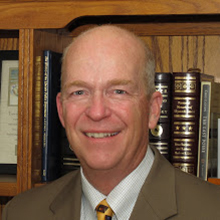
With the explosion of social media and smartphones, there has been a growing expectation that police departments and 911 Centers ought to send tailored alerts of potential risks directly to citizens and organizations, such as schools, businesses, assisted living centers, and just ordinary citizens. Last night, a local TV station ran a story about this, interviewing the proprietor of a day care center who was unhappy that she wasn’t notified of a shooting that happened at 3:50 AM on Sunday morning a short distance from her business.
There are many software systems out there for delivering mass notifications. The problem is not the lack of technology, rather it is the lack of the infrastructure necessary to exploit the technology. Specifically, it would require personnel. Essentially, someone would need to be dedicated to the task of listening to the radio and watching the flow in the computer-aided dispatch center. This person would need to make a determination about which incidents need to trigger a public alert, to whom it should be sent, and what the content should be. He or she would not only need to compose the alert, but would also need to determine when an “all clear” rescinding the alert is appropriate.
This is no small task. It would require someone with exceptionally good knowledge about the dynamics of police events in the field. Not very many robberies, for example, represent an immediate risk to people in the surrounding area. Many reports are belated, and in many cases the assailant is known to the victim and was long gone before the police were even called. Conversely, a simple hit-and-run crash could turn into an emergency event, if the wanted felon involved in the collision flees the scene on foot armed with a pistol and disappears into the surrounding neighborhood. Although technology can help, this is something that cannot be entirely automated. Human judgement is needed to distinguish the incidents that require notifications from the background noise.
Moreover, a mass notification system like this would need to operate 24 hours a day, seven days a week, 365 days a year. That requires about 5.5 full-time equivalent employees. In a low-volume environment, you might be able to use employees who multi-task, performing other duties but able to drop what they are doing to attend to alerts as needed, a sergeant, for instance, or a dispatcher. That’s not going to happen reliably in a busy 911 Center where employees are frequently working mandatory overtime, and where its a struggle just to fill the seats. Consider that during a big event that might suggest an alert, the dispatchers and police officers are especially busy.
If it’s so difficult, you might ask, why are universities able to manage such systems, notifying their students and staffs of risky business? Aside from the fact that universities are generally mighty well funded, the simple fact is that your typical university police department is not very busy. As an example, the University of Nebraska Police Department handled 13 incidents yesterday. The Lincoln Police Department handled 334.
I’m not saying “never,” but the impediments to such notification systems are substantial. Recently, we have been looking at various notification systems, and trying to brainstorm about how we might possibly incorporate these into our operations. If we had the personnel to do so, we might even use something as simple as the police department’s Twitter feed, but it isn’t staffed or monitored constantly, and we don’t have the people to do so. We’ve also been considering the feasibility of launching a real time crime center for Lincoln, which might be an ideal location for a public notification system.
In the days before Twitter and Facebook, people turned to the news media in order to stay abreast of things going on in the community. Folks actually used to listen to AM radio, and could follow the news reports of the Martian invasion and take appropriate precautions. If we had some big deal going on and needed to get the word out quickly, a couple of phone calls to the radio stations were obligatory. In every news room in Lincoln, whether print, radio, or television, assignment editors and reporters are listening to police scanners right now. These days, they are often tweeting about interesting or emergent transmissions they hear in near real-time.
For the moment, your workaround might be to simply follow the Twitter feeds of a few of the local news outlets if you really need to know what’s breaking bad at any given moment. Rest assured that if we thought a day care, senior center, business, or residence was in imminent risk of harm, we’d be making concerted efforts to notify you the old-fashioned way: door to door, and also through the news media.
This post was originally published on June 3, 2016 on Director Casady’s blog.